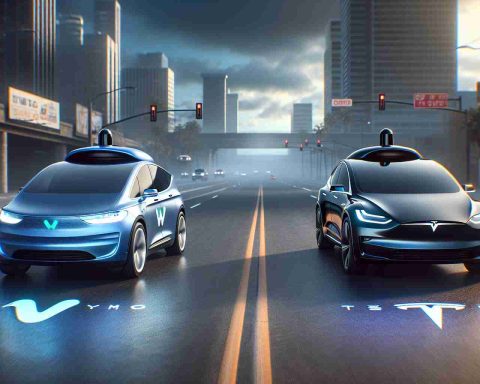A New Era of Innovation Unveiled
In an exciting development, Toyota Chairman Akio Toyoda is set to showcase his ambitious project, Woven City, at CES this January. Five years ago, Toyoda unveiled his vision for a prototype city in Japan, situated near the iconic Mount Fuji. This innovative space aims to blend everyday living with cutting-edge technologies such as autonomous vehicles, robotics, smart home solutions, and artificial intelligence.
During the annual tech event in Las Vegas, Toyoda will take center stage at 1 p.m. PT on January 6, sharing the latest updates about this groundbreaking initiative. The highly anticipated presentation will be accessible to audiences worldwide via livestream on Toyota’s official website.
A sneak preview of the event features Toyoda in a hard hat and safety gear, exploring a modern building within Woven City. He dramatically unveils views of Mount Fuji, inviting viewers into the city of the future.
While specific details about the presentation remain under wraps, industry observers are eager to learn how startups will be integrated into this ambitious project. The focus will also be on Toyota’s commitment to creating a fully connected environment that operates on hydrogen fuel cells, highlighting their vision’s evolution from concept to concrete reality. As anticipation builds, Woven City stands as a testament to the future of urban living powered by innovative technology.
Discover the Future: A Look Inside Toyota’s Woven City at CES
A New Era of Innovation Unveiled
As the world gears up for the Consumer Electronics Show (CES) in January, excitement is building around Toyota’s groundbreaking project, Woven City. Set in the shadow of Japan’s iconic Mount Fuji, this innovative urban space promises to redefine modern living through the integration of advanced technologies. Chairman Akio Toyoda will take the stage on January 6 at CES to discuss the latest developments regarding this ambitious initiative.
# Key Features of Woven City
Woven City is designed as a testbed for sustainable urban living. Some of its key features include:
– Autonomous Vehicles: The city will showcase a fleet of self-driving cars designed to facilitate seamless transport within the urban landscape.
– Robotics and AI: Robotics will play a crucial role in everyday tasks, enhancing convenience and efficiency for residents.
– Hydrogen Energy: With a commitment to sustainability, Woven City aims to operate primarily on hydrogen fuel cells, representing a significant step toward eco-conscious urban infrastructures.
– Smart Homes: The integration of smart home solutions will provide residents with a technologically advanced living experience, including automation in utilities and home security.
# How Woven City Stands Out
– Innovation Environment: Woven City is not just a living space but also a hub for startups and innovators. By collaborating with various tech companies, it aims to integrate new functionalities and improve urban living standards.
– Community-Centric Design: The city is designed to foster community interactions and prioritize pedestrian traffic, encouraging social engagement and physical activity.
– Adaptation and Flexibility: The buildings in Woven City are designed to adapt to changing needs, highlighting sustainable architectural practices.
# Pros and Cons of Woven City
Pros:
– Pioneers new urban living concepts.
– Encourages sustainable practices and renewable energy use.
– Provides a testing ground for cutting-edge technologies.
Cons:
– High initial costs of development and technology integration.
– Uncertain long-term social implications on community dynamics.
– Potential risks associated with reliance on automated systems.
# Insights on Future Trends
The unveiling of Woven City marks a significant trend towards smart, sustainable cities. As urbanization continues to rise globally, projects like Woven City highlight the need for innovations that not only enhance living conditions but also address climate change and resource scarcity.
# Pricing and Market Analysis
While specific pricing details for living in Woven City are still unavailable, the project has attracted significant investments from both public and private sectors, emphasizing the growing market interest in sustainable urban developments.
# Conclusion: The Future Awaits
Woven City encapsulates Toyota’s vision for a smarter, more connected future. As Chairman Akio Toyoda prepares to unveil more details at CES, the world watches closely, eager to grasp the potential of living in a city where innovation meets sustainability. Stay tuned for live updates and revelations as the event unfolds on the official Toyota website.













